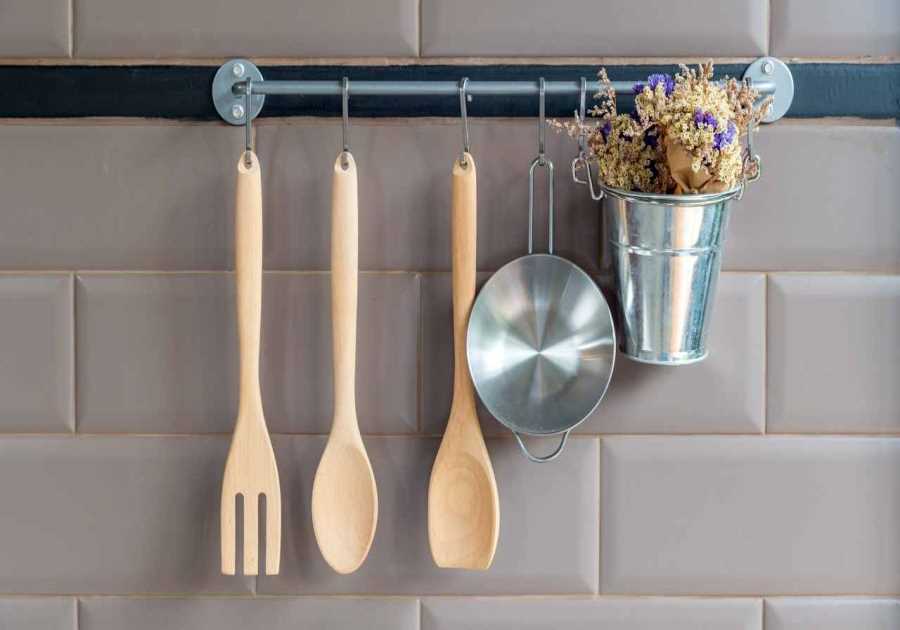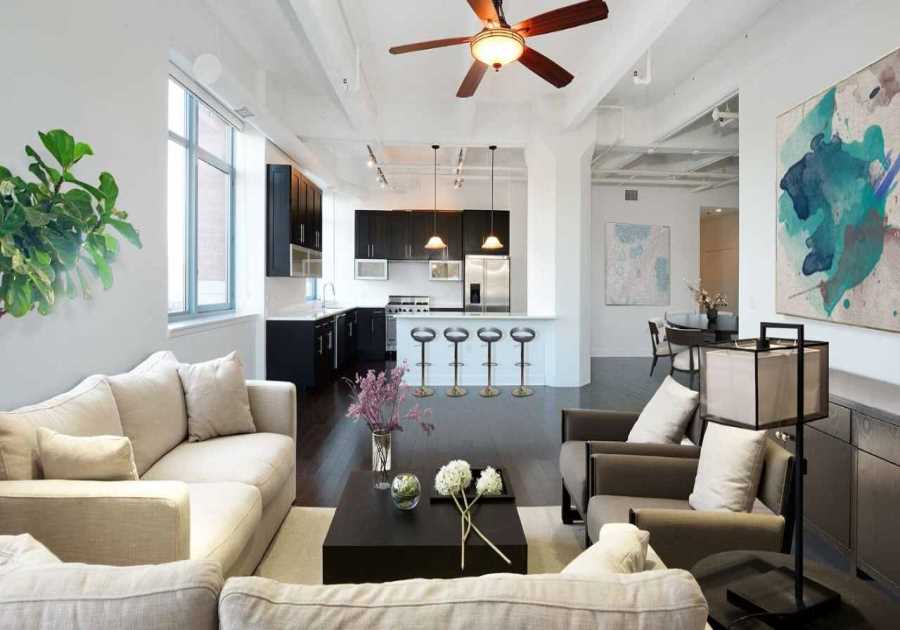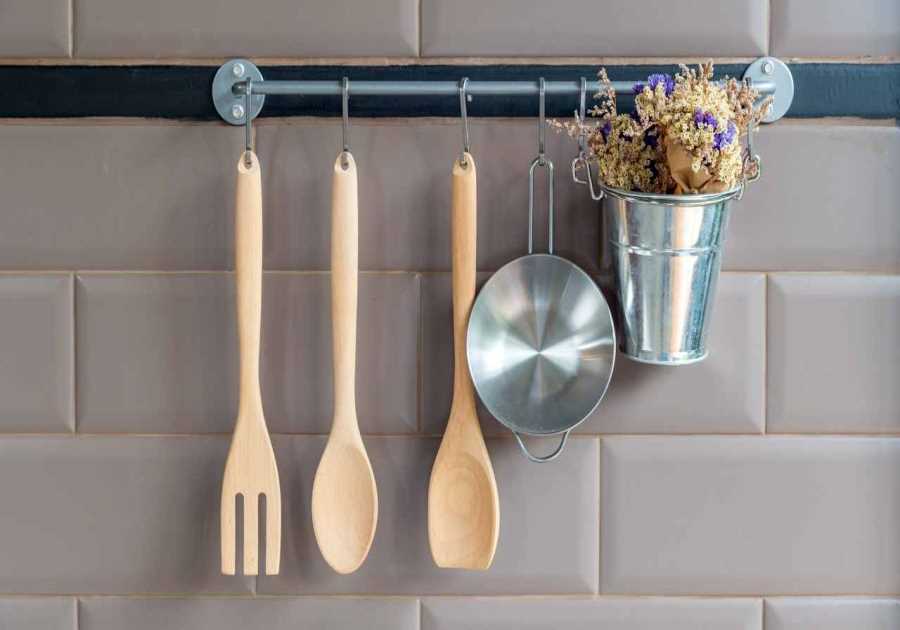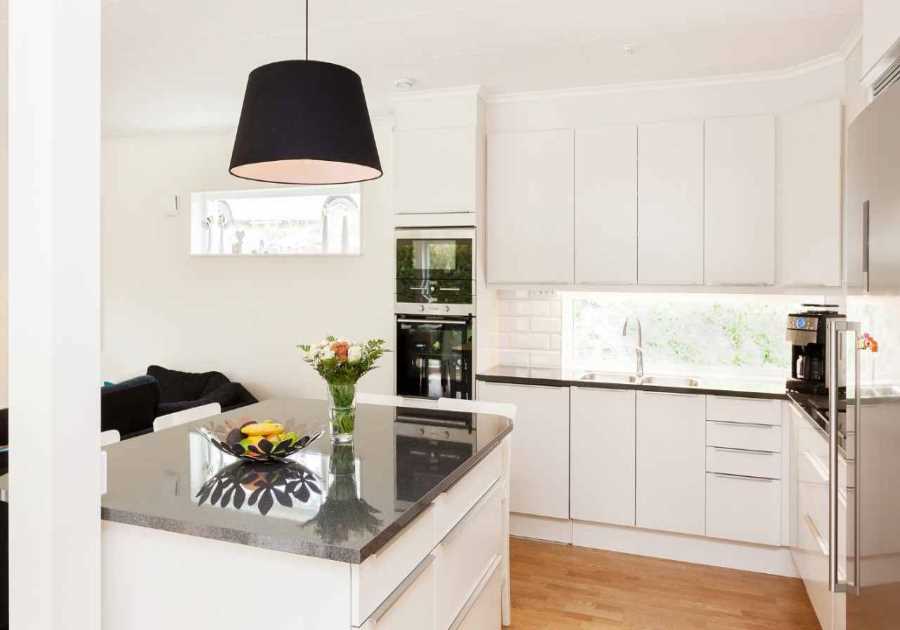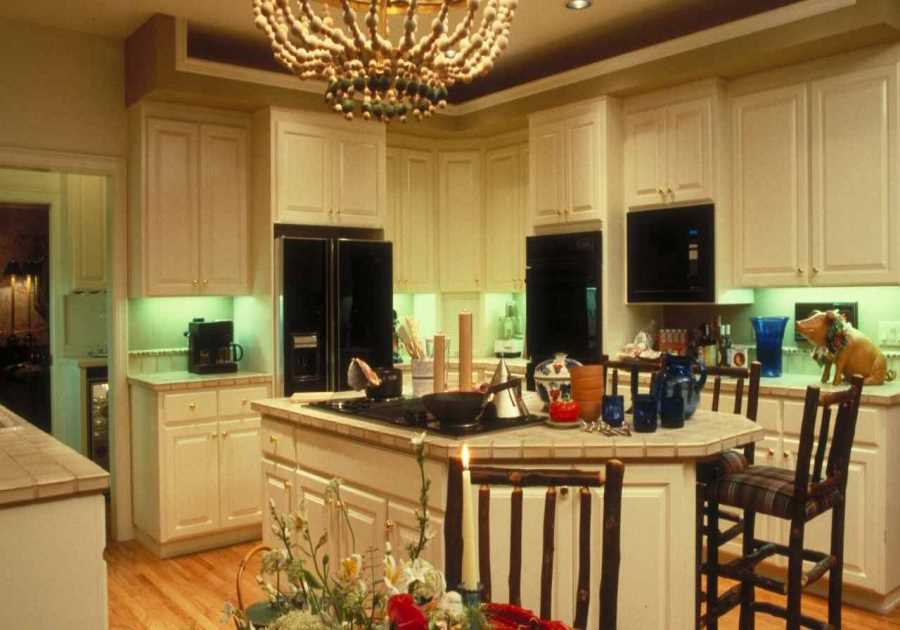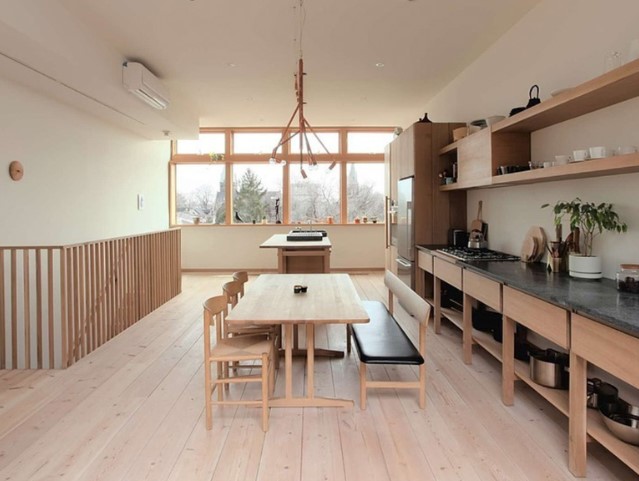
How Japanese kitchens embody the perfection of minimalism and how to make it work for your home.
Minimalism is all about seeing through the clutter to create something truly beautiful. Japanese kitchens are some of the best examples of this philosophy in practice, where quality and function blend impeccably with a strong aesthetic appeal.
By embracing minimalism in your kitchen design choices, you can create an inviting and efficient environment without sacrificing any of your unique styles.
The key to creating a minimalist kitchen is to opt for practical materials with clean lines, timeless finishes and a neutral colour palette that won’t detract from the overall look. Stick to natural materials like wood or marble and accentuate with metal elements like steel lamps and appliances.
Incorporate organizational tools like open shelving systems, allowing you to display beloved items while maintaining an orderly appearance. Keep it simple by including only what you need and organizing items into specific groupings, such as dishes, condiments or spices, so everything has its place.
For additional storage solutions, try creative wall-mount shelves instead of traditional cabinetry or use small pieces like cart drawers or a slim bookcase for items that don’t take up too much space but still need to be kept close at hand in the kitchen.
Finally, choose sleek modern lighting fixtures and strategic task lighting for meal prepping—all designed to make life easier while contributing to minimalism's calming atmosphere.
For anyone looking for inspiration on how to turn their kitchen into something special, look no further than Japanese-inspired minimalism design—the perfect embodiment of practicality and refinement. With a careful selection of materials, colours and thoughtful organization tools, you will have all elements necessary for a stylish yet functional kitchen space sure to inspire culinary greatness!
Why Japanese kitchens have cutting-edge features and designs that unlock the secrets of incredible culinary creativity.
My quest began by exploring the design influences from the Meiji period, which brought inspiration from around the globe, including Scandinavia and Japan. By combining these two major styles, I created a chic but minimalist design that expressed my personality and elevated my cooking to something truly special.
The key lies in employing small but significant details, such as enhancing your wooden cabinets with bamboo accents or adding dark granite countertops and sleek slate flooring for contrast. Even something as simple as hanging diaphanous curtains can provide an airy yet energetic aesthetic while creating ample space for added drama and expression of individuality.
These touches are only made possible through a perfect harmony between form and function – pairing innovative technology with imaginative flair – transforming your kitchen into a place where cooking flows spontaneously, clean-up is effortless, and entertaining is easy!
By unlocking the secrets of Japanese kitchens, you will be able to create an exquisite culinary paradise that expresses who you are and increases your emotional connection with food!
The Meiji period brought ideas from around the world.
The Meiji period in Japan lasted from 1868 to 1912. It was a period of political, economic and social revolution. A new engagement with foreign cultures and an emphasis on realism in art characterized it.
The era began when the Tokugawa shogun ended his power and began to rule through a new system. In the Meiji period, the government sought to build a nation based on Western models.
One of the first changes was the creation of a national educational system. This was followed by the establishment of a constitution in 1889. During that time, people of all social classes could participate in government.
Although the emperor was not directly in charge, he represented the unity of the Japanese people. The emperor also served as the head of the Shinto religion.
During this period of profound change, one thing that remained unchanging was how people cooked their food. Kitchens in Japan have remained relatively similar to how they were during Meiji-era. Although there have been some modern advances, Japanese cuisine's essence has remained remarkably intact. Even today, most Japanese kitchens have similar features to those from rural and urban homes in the past. These features include various countertops, a stove, a sink and shelves for storing ingredients and utensils. However, what truly makes Japanese kitchens unique is the items found within them. From hanging bamboo baskets filled with seaweed to ceramic vessels used for fermenting soybeans, these traditional items help deepen the flavours of any dish prepared in a Japanese kitchen. This traditional way of cooking brings out the natural sweetness from ingredients and creates dishes full of flavour and nutrition that nourish both body and soul. So if you want to bring some new life into your kitchen - why not start by incorporating some timeless Japanese techniques?
Scandinavian and Japanese elements were combined to create a chic and minimalist design.
Japanese and Scandinavian design share several commonalities, ranging from the use of natural materials to the emphasis on functionality. In recent years, more designers have begun incorporating the two styles to create chic and minimalist designs for kitchens.
One example is the Japanese style. It combines the rustic minimalism of Japanese design with the clean lines of Scandinavian designs. Featuring bright, neutral tones, the Japandi style emphasizes the use of natural textures and light colours.
Another example is the wabi-sabi concept. This Japanese philosophy highlights the beauty of the imperfect. Designed to encourage relaxation, wabi-sabi is a perfect fit for modern lifestyles. The philosophy involves the creation of a peaceful environment where people can relax.
Japanese and Scandinavian designs have a similar appreciation for the quality of craftsmanship. Especially in the case of furniture, it is characterized by the use of quality materials and the use of high-quality wooden pieces.
Frequently Asked Questions
Can you DIY a Kitchen Renovation
You may be wondering if you can actually do your own kitchen renovation. While the answer is yes, there are some things that you need to keep in mind.
First, a kitchen remodel can be a huge undertaking so ensure you have the necessary time and energy. It is also important to know basic plumbing and carpentry before you begin. It's also necessary to decide which aspects you want to change in your kitchen, such a storage area, replacement of old appliances or improved lighting.
Now it's time for you to begin shopping for kitchen materials. It's time to choose cabinets, countertops and flooring.
This is an excellent idea. This will help determine how much space and what layout is best for your kitchen.
When it comes to cabinets, you have many options. You have the option of custom or ready-to assemble cabinets. RTA cabinets are available in a variety of styles and colours, and they tend to be less expensive than custom cabinets.
You must ensure that you take every precaution to protect yourself and your family before embarking on large-scale renovations. For example, you might want to check the local building codes for renovations.
Although it may seem tempting to handle a large-scale project on your feet, it is best that you seek professional advice. It is possible to save both time as well as money by hiring qualified contractors. A professional can help you ensure that your project runs smoothly.
What should I do if my kitchen is being renovated?
If you love to eat takeout, you don’t have to leave. For children and pets with young children, you might be able to live at a neighbor's house. It will be easier for you to keep your pets safe and not worry about them getting hurt or in danger. Plus, keeping your sanity will be much easier if you're not dealing with construction noise and dust daily. If you decide to move out, get a written estimate from your contractor of how long the job will take. You can then plan your move according to their schedule.
Do you install flooring beneath kitchen appliances or not?
It is important to place flooring underneath kitchen appliances. You can ensure that your countertop is at the correct height.
What are the essential characteristics of an ideal home?
An ideal kitchen with plenty of storage space should be large enough for cooking, cleaning, entertaining, etc. A well-designed kitchen also has easy access to natural light and ventilation.
Where should pots and pans go in the kitchen?
Pots and pans are best kept in the cupboard above the stove. This keeps them in reach when you need them. It also makes your kitchen counters look neat and clean. A pot rack can also be a great investment to keep your pots and saucepans organized and easily accessible.
What countertops go best with white kitchen cabinets?
White kitchens allow you to be very bold with your countertops. Quartz countertops have become the standard in kitchen design. We have a few top tips for white kitchens:
- Different shades of concrete grey
- Bold Granite-like Patterns
- Veiny marble-like designs
- Bright and striking colours, such as sunflower yellow or ocean-blue, are ideal
What are the top mistakes when renovating a kitchen?
- A kitchen installed in an inappropriate location might not work.
- Putting the dishwasher too far away from the sink may result in wet floors.
- If the fridge is placed next the oven, it can make opening the door difficult.
- It can be difficult to have enough counter space.
- Another mistake is not having enough storage. Make sure to have enough cabinets and shelves to store all your kitchen appliances and gadgets.
- You can't choose the appliances you want until the very last moment when installing a new Kitchen.
- You want them to be space-friendly and energy-efficient.
- This is a mistake. They can ensure everything is to scale and fits in the space correctly.
- Doing too much is a common mistake when renovating a kitchen. It is important to know your limits so that you can hire a professional for a successful kitchen remodel.
- It is a mistake to not plan for enough money. Kitchens are expensive. Make sure you have enough funds to cover the whole project.
- This is a mistake. You should know the style, layout, and finishes you want before starting the renovation.
These are just a few common mistakes people make when renovating their kitchens. These mistakes can be avoided by consulting a professional prior to starting your project. If you are careful about planning and execution, your kitchen renovation will be a success.
Statistics
- Your most significant cost investment for a kitchen remodel will usually be cabinets, typically comprising 25 percent of your budget. (hgtv.com)
- It's a fantastic thing about most home improvement projects: no matter the job. It often seems like the last 20% is the most difficult. (familyhandyman.com)
- Keep 10 to 25 percent of List 2, depending on the budget. (familyhandyman.com)
- Followed by cabinet cost, labour, and appliance costs consume 20 percent each of your budget. (hgtv.com)
- In the Pacific region (Alaska, California, Washington, and Oregon), according to Remodeling Magazine, that same midrange central kitchen remodel jumps to $72,513, and a major upscale kitchen remodels jumps up $11,823 from the national average to $143,333. (hgtv.com)
External Links
forbes.com
thespruce.com
- Open Floor Plan: History of the Pros and Con's
- Find professionals to estimate kitchen remodeling costs
remodeling.hw.net
homeadvisor.com
- How much does it cost to remodel a kitchen? Compose: SEO
- How much does a kitchen remodel increase your home's value? - HomeAdvisor
How To
What will it cost to remodel your kitchen in 2022? [12 Tips to Save Money]
How much money will it cost to remodel your kitchen? The average cost of a new kitchen ranges between $40,000 and $100,000 depending on how large the space is, as well as what features you select. If you're planning to sell your home soon, consider adding some upgrades to get top dollar at the market value.
These are the top 12 ways we can cut costs without sacrificing quality.
- Appliances for sale secondhand
- DIY projects
- Repurpose old furniture
- Save scrap materials
- You can hire a professional to do the job
- Donate your stuff
- Sell online
- Get creative with paint colours
- Go green
- Keep it simple
- Make it unique
- Be flexible
.png)
